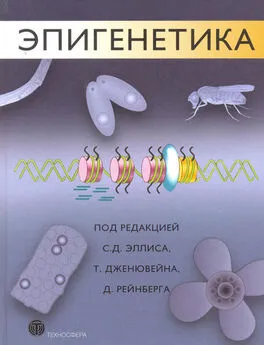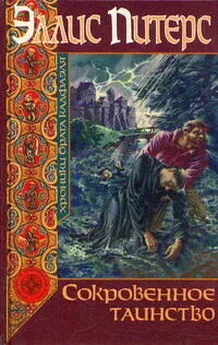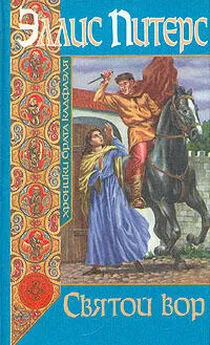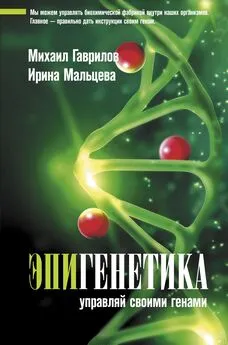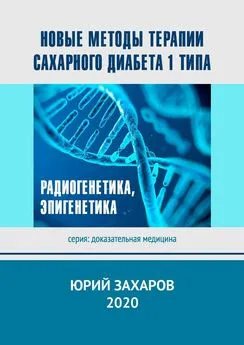Чарльз Эллис - Эпигенетика
- Название:Эпигенетика
- Автор:
- Жанр:
- Издательство:Техносфера
- Год:2010
- Город:Москва
- ISBN:978-5-94836-257-1
- Рейтинг:
- Избранное:Добавить в избранное
-
Отзывы:
-
Ваша оценка:
Чарльз Эллис - Эпигенетика краткое содержание
Книга ярко и наглядно повествует о новой науке общебиологического значения — эпигенетике, а также об ее отдельных областях. В издании представлено описание разных эпигенетических сигналов и механизмов их реализации, а также собственно феномен, история и концепции эпигенетики, ее отдельные механизмы и пути реализации эпигенетических сигналов в клетке. Авторы различных глав данной книги — ведущие в мире специалисты в области эпигенетики, являющиеся, как правило, и основоположниками ее отдельных областей.
Издание будет полезно широкому кругу читателей, интересующихся коренными проблемами живого мира, сущности жизни и молекулярных механизмов ее проявления.
По формирующейся традиции современной российской научной литературы, оригинальное русскоязычное печатное издание неопрятно переведено, отвратительно вычитано и содержит большое количество ошибок, начиная с обложки. Чарльз Дэвид Эллис указан как С. Д. Эллис.
Эпигенетика - читать онлайн бесплатно полную версию (весь текст целиком)
Интервал:
Закладка:
Takechi S. and Nakayama T., 1999. Sas3 is a histone acetyltransferase and requires a zinc finger motif. Biochem. Biophys. Res. Commun. 266: 405-410.
Tamaru H. and Selker E.U., 2001. A histone H3 methyltransferase controls DNA methylation in Neurospora crassa. Nature 414: 277-283.
Taplick J., Kurtev V., Lagger G., and Seiser C., 1998. Histone H4 acetylation during interleukin-2 stimulation of mouse T cells. FEBS Lett. 436: 349-352.
Thomson S., Clayton A.L., Hazzalin C.A., Rose S., Barratt M.J., and Mahadevan L.C., 1999. The nucleosomal response associated with immediate-early gene induction is mediated via alternative MAP kinase cascades: MSK1 as a potential histone H3/HMG-14 kinase. EMBO J. 18: 4779-4793.
Turner B.M., 2000. Histone acetylation and an epigenetic code. Bioessays 22: 836-845.
Turner B.M.2005. Reading signals on the nucleosome with a new nomenclature for modified histones. Nat. Struct. Mol. Biol. 12: 110-112.
Turner B.M. and Fellows G., 1989. Specific antibodies reveal ordered and cell-cycle-related use of histone-H4 acetylation sites in mammalian cells. Eur. J. Biochem. 179: 131-139.
van Attikum H. and Gasser S.M., 2005. The histone code at DNA breaks: A guide to repair? Nat. Rev. Mol. Cell Biol. 6: 757-765.
van Leeuwen F, Gafken P.R., and Gottschling D.E., 2002. Dotlp modulates silencing in yeast by methylation of the nucleosome core. Cell 109: 745-756.
Vandel L., Nicolas E., Vaute O., Ferreira R., Ait-Si-Ali S., and Trouche D., 2001. Transcriptional repression by the retinoblastoma protein through the recruitment of a histone methyltransferase. Mol. Cell. Biol. 21: 6484-6494.
Vaquero A., Scher M., Lee D., Erdjument-Bromage H., Tempst P., and Reinberg D., 2004. Human SirTl interacts with histone HI and promotes formation of facultative heterochromatin. Mol. Cell 16: 93-105.
Verreault A., Kaufman P.D., Kobayashi R., and Stillman B., 1998. Nucleosomal DNA regulates the core-histone-binding subunit of the human Hatl acetyltransferase. Curr. Biol. 8: 96-108.
Visochek L., Steingart R.A., Vulih-Shultzman I., Klein R., Priel E., Gozes I., and Cohen-Armon M., 2005. PolyADP-ribosylation is involved in neurotrophic activity. J. Neurosci. 25: 7420-7428.
Wang H., Cao R., Xia L., Erdjument-Bromage H., Borchers C., Tempst P., and Zhang Y., 2001a. Purification and functional characterization of a histone H3-lysine 4-specific methyltransferase. Mol. Cell 8: 1207-1217.
Wang H., Wang L., Erdjument-Bromage H., Vidal M., Tempst P., Jones R.S., and Zhang Y., 2004. Role ofhistone H2A ubiquitination in Polycomb silencing. Nature 431: 873-878.
Wang H., An W., Cao R., Xia L., Erdjument-Bromage H., Chatton B., Tempst P., Roeder R.G., and Zhang Y., 2003. mAM facilitates conversion by ESET of dimethyl to trimethyl lysine 9 ofhistone H3 to cause transcriptional repression. Mol. Cell 12: 475-487.
Wang H., Huang Z.Q., Xia L., Feng Q., Erdjument-Bromage H., Strahl B.D., Briggs S.D., Allis C.D., Wong J., Tempst P., and Zhang Y., 2001b. Methylation ofhistone H4 at arginine 3 facilitating transcriptional activation by nuclear hormone receptor Science 293: 853-857.
Wang Y., Zhang W., Jin Y, Johansen J., and Johansen K.M., 2001. The JIL-1 tandem kinase mediates histone H3 phosphorylation and is required for maintenance of chromatin structure in Drosophila. Cell 105: 433-443.
Wei Y., Yu L., Bowen J., Gorovsky M.A., and Allis C.D., 1999. Phosphorylation of histone H3 is required for proper chromosome condensation and segregation. Cell 97: 99-109.
Wilson J.R., Jing C, Walker P.A., Martin S.R., Howell S.A., Blackburn G.M., Gamblin S.J., and Xiao B., 2002. Crystal structure and functional analysis of the histone methyltransferase SET7/9. Cell 111: 105-115.
Wyatt H.R., Liaw H., Green G.R., and Lustig A.J.. 2003. Multiple roles for Saccharomyces cerevisiae histone H2A in telomere position effect, Spt phenotypes and double-strand-break repair. Genetics 164: 47-64.
Xin Z., Tachibana M., Guggian M., Heard E., Shinkai Y, and Wag-staff J., 2003. Role ofhistone methyltransferase G9a in CpG methylation of the Prader-Willi syndrome imprinting center. J. Biol. Chem. 278: 14996-15000.
Yamamoto T. and Horikoshi M., 1997. Novel substrate specificity of the histone acetyltransferase activity of HIV-1-Tat interactive protein Tip60. J. Biol. Chem. 272: 30595-30598.
Yamamoto Y., Verma U.N., Prajapati S., Kwak Y.T., and Gaynor R.B., 2003. Histone H3 phosphorylation by IKK-alpha is critical for cytokine-induced gene expression. Nature 423: 655-659.
Yang L., Xia L., Wu D.Y., Wang H., Chansky H.A., Schubach W.H., Hickstein D.D., and Zhang Y., 2002. Molecular cloning of ESET, a novel histone H3-specific methyltransferase that interacts with ERG transcription factor. Oncogene 21. 148-152.
Zegerman P., Canas B., Pappin D., and KouzaridesT., 2002. Histone H3 lysine 4 methylation disrupts binding of nucleosome remodeling and deacetylase (NuRD) repressor complex. J. Biol. Chem. 217: 11621-11624.
Zeitlin S.G., Barber C.M., Allis C.D., and Sullivan K.E, 2001. Differential regulation of CENP-A and histone H3 phosphorylation in G 2/M./. Cell Sci. 114: 653-661.
Zhang L., Eugeni E.E., Parthun M.R., and Freitas M.A., 2003. Identification of novel histone post-translational modifications by peptide mass fingerprinting. Chromosoma 112: 77-86.
Zhong S., Jansen C, She Q.B., Goto H., lnagaki M., Bode A.M., Ma W.Y., and Dong Z., 2001. Ultraviolet B-induced phosphorylation ofhistone H3 at serine 28 is mediated by MSK1. J. Biol. Chem. 276: 33213-33219.
Bannister A. J. and Kouzarides T., 2005. Reversing histone methylation. Nature 436: 1103-1106.
Berger S.L., 2002. Histone modifications in transcriptional regulation. Curr. Opin. Genet. Dev. 12: 42-148.
Davie J.R. and Spencer V.A., 2001. Signal transduction pathways and the modification of chromatin structure. Prog. Nucleic Acid Res. Mol. Biol. 65: 299-340.
Cosgrove M.S., Boeke J.D., and Wolberger C., 2004. Regulated nucleosome mobility and the histone code. Nat. Struct. Mol. Biol. 11: 1037-1043.
Dobosy J.R. and Selker E.U., 2001. Emerging connections between DNA methylation and histone acetylation. Cell. Mol. Life Sci. 58: 721-727.
Dunleavy E., Pidoux A., and Allshire R., 2005. Centromeric chromatin makes its mark. Trends Biochem. Sci. 30: 172-175.
Elgin S.C and Grewal S.L, 2003. Heterochromatin: Silence is golden. Curr. Biol. 13: R895-R898.
Emre N.C. and Berger S.L., 2004. Histone H2B ubiquitylation and deubiquitylation in genomic regulation. Cold Spring Harbor Symp. Quant. Biol. 69: 289-299.
Esteller M., 2006. Epigenetics provides a new generation of oncogenes and tumour-suppressor genes. Br. J. Cancer 94: 179-183.
Feinberg A. P. and Tycko B., 2004. The history of cancer epigenetics. Nat. Rev. Cancer 4: 143-153.
Fischer A., Hofmann I., Naumann K., and Reuter G., 2006. Heterochromatin proteins and the control of heterochromatic gene silencing in Arabidopsis. J. Plant Physiol. 163: 358-368.
Fischle W., Wang Y., and Allis C.D., 2003. Binary switches and modification cassettes in histone biology and beyond. Nature 425: 475-479.
Fischle W., Wang Y., and Allis C.D., 2003. Histone and chromatin cross-talk. Curr. Opin. Cell. Biol. 15: 172-183.
Grewal S.L and Elgin S.C., 2002. Heterochromatin: New possibilities for the inheritance of structure. Curr. Opin. Genet. Dev. 12: 178-187.
Grunstein M., 1997. Histone acetylation in chromatin structure and transcription. Nature 389: 349-352.
Grunstein M., 1997. Molecular model for telomeric heterochromatin in yeast. Curr. Opin. Cell Biol. 9: 383-387.
Grunstein M., 1998. Yeast heterochromatin: Regulation of its assembly and inheritance by histones. Cell 93: 325-328.
Henikoff S. and Ahmad K., 2005. Assembly of variant histones into chromatin. Annu. Rev. Cell Dev. Biol. 21: 133-153.
Hild M. and Paro R., 2003. Anti-silencing from the core: A histone H2A variant protects euchromatin. Nat. Cell Biol. 5: 278-280.
Jenuwein T and Allis C.D., 2001. Translating the histone code. Science 293: 1074-1080.
Kimmins S. and Sassone-Corsi P., 2005. Chromatin remodelling and epigenetic features of germ cells. Nature 434: 583-589.
Kurdistani S.K. and Grunstein M., 2003. Histone acetylation and deacetylation in yeast. Nat. Rev. Mol. Cell Biol. 4: 276-284.
Lachner M., O’Sullivan R.J., and Jenuwein T., 2003. An epigenetic road map for histone lysine methylation. J. Cell Sci. 116: 2117-2124.
Luger K. and Richmond T.J., 1998. The histone tails of the nucleosome. Curr. Opin. Genet. Dev. 8: 140-146.
Mellone B.G. and Allshire R.C., 2003. Stretching it: Putting the CEN (P-A) in centromere. Curr. Opin. Genet. Dev. 13: 191-198.
Millar C.B., Kurdistani, S.K. and Grunstein M., 2004. Acetylation of yeast histone H4 lysine 16: A switch for protein interactions in heterochromatin and euchromatin. Cold Spring Harbor Symp. Quant. Biol. 69: 193-200.
Nightingale K.P., O’Neill L.P., and Turner B.M., 2006. Histone modifications: Signalling receptors and potential elements of a heritable epigenetic code. Curr. Opin. Genet. Dev. 16: 125-136.
Peterson CL. and Laniel M.A., 2004. Histones and histone modifications. Curr. Biol. 14: R546-551.
Reinberg D., Chuikov S., Famham P., Karachentsev D., Kirmizis A., Kuzmichev A., Margueron R. Nishioka K., PreissnerT.S., Sarma K., et al., 2004. Steps toward understanding the inheritance of repressive methyl-lysine marks in histones. Cold Spring Harbor Symp. Quant. Biol. 69: 171-182.
Sarma K. and Reinberg D., 2005. Histone variants meet their match. Nat Rev. Mol. Cell Biol. 6: 139-149.
Spencer V.A. and Davie J.R., 2000. Signal transduction pathways and chromatin structure in cancer cells. J. Cell. Biochem. Suppl. 35: 27-35.
Stemglanz R., 1996. Histone acetylation: Agateway to transcriptional activation. Trends Biochem. Sci. 21: 357-358.
Turner B.M., 2000. Histone acetylation and an epigenetic code. Bioessays 22: 836-845.
van Attikum H. and Gasser S.M., 2005. The histone code at DNA breaks: A guide to repair? Nat. Rev. Mol. Cell Biol. 6: 757-765.
Читать дальшеИнтервал:
Закладка:
